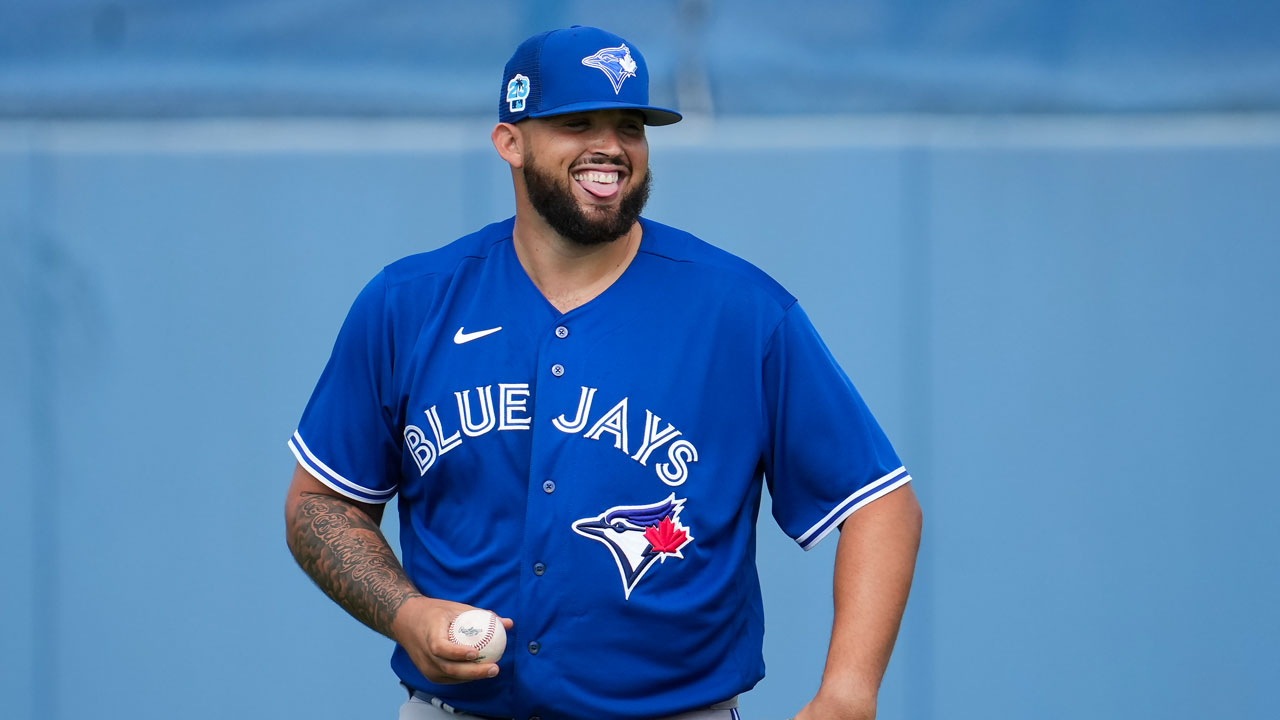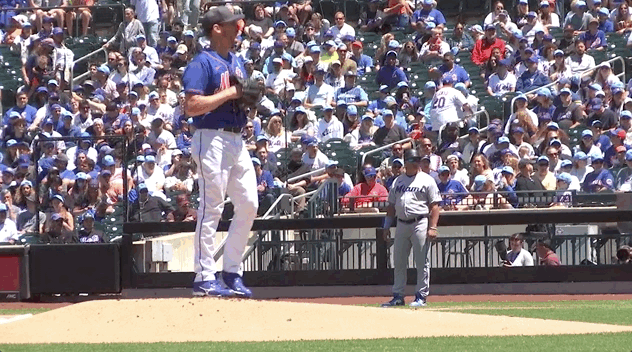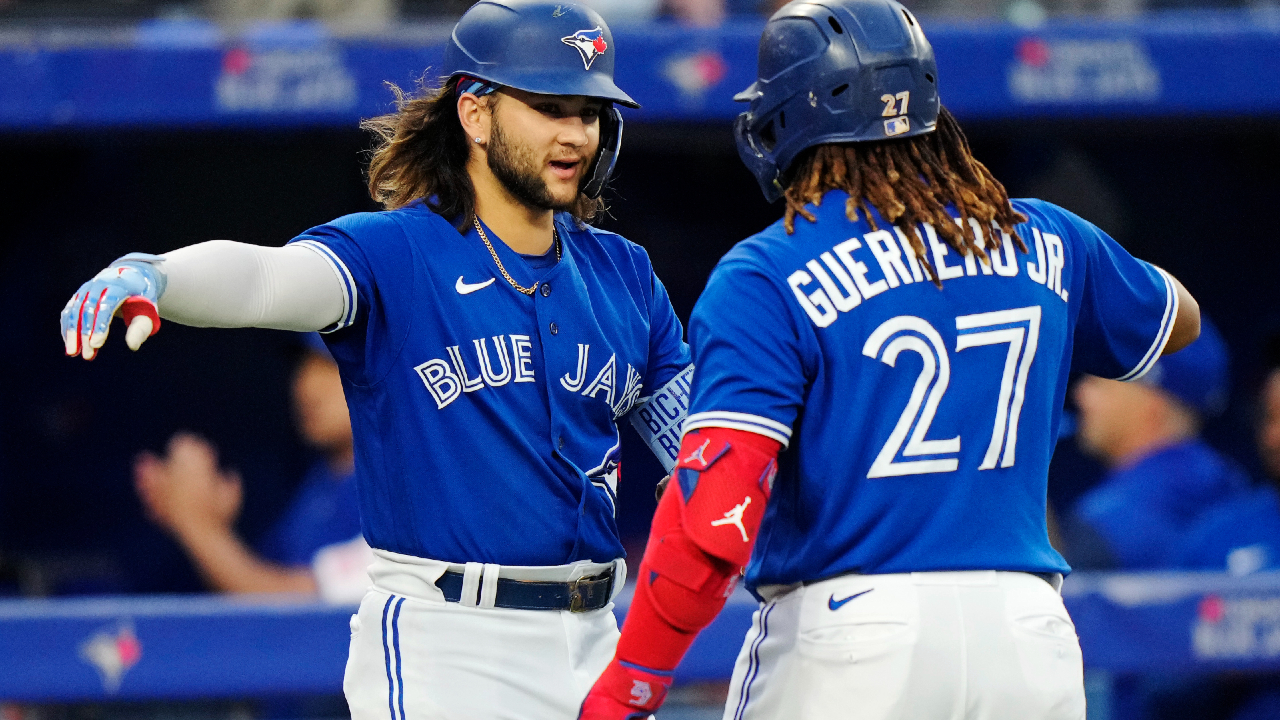Blue Jays’ Bassitt follows specific spring routine to gear up for season
CLEARWATER, Fla. — For your reference, the following is a high-level overview of the goals Chris Bassitt aims to accomplish in each of his spring training appearances while preparing for the regular season:
First outing: Shake off the rust; feel the mound; find comfort throwing to live hitters
Second outing: Hone fastball location; re-establish feel for lanes to the plate; work on targeting specific areas of the zone
Third outing: Begin increasing velocity; play with rhythm and timing; mix in all pitches
Fourth outing: Establish a velocity floor to begin the season from; focus on refining one or two secondary pitches
Fifth and sixth outings: Treat these like regular season starts; introduce scouting reports; establish a pre- and post-game routine; execute a considered game plan
Feel free to refer back to this structure as Bassitt goes along — not only this spring, but in his next two under the three-year, $63-million free agent contract he signed with the Toronto Blue Jays in December. Know that he’s working through a process. One that, as with all things pitching, he’s thought quite deeply about.
Of course, Bassitt didn’t always have his spring progression so carefully crafted. This is 13 professional seasons in the making. And the 34-year-old’s still working on it. He won’t stop until he retires. But over the last four seasons in particular, a span in which Bassitt ranks top-25 MLB-wide in ERA (3.31) and innings pitched (546), the artful right-hander has devised a plan that best positions him to excel in those most elemental of pitching statistics.
.acf-block-preview .br-snippet {
display: grid;
grid-template-columns: 200px 1fr;
gap: 20px;
width: 100%;
margin: 0 auto;
padding: 16px;
border: 1px solid #CECECE;
background-color: #FFF;
border-radius: 4px;
}
.acf-block-preview .br-snippet-info a {
text-decoration: none;
}
.acf-block-preview .br-snippet-info .br-snippet-title {
color: #343434;
font-family: ‘roboto’;
font-size: 20px;
font-weight: 600;
line-height: 22px;
margin-bottom: 10px;
top: -3px;
}
.acf-block-preview .br-snippet-info .br-snippet-body {
color: #343434;
font-family: ‘urw-din’;
font-size: 16px;
line-height: 20px;
margin-bottom: 12px;
}
.acf-block-preview .br-snippet-info .br-snippet-link-title {
display: inline-block;
font-family: ‘urw-din’;
font-size: 16px;
list-style-type: none;
width: auto;
}
.acf-block-preview .br-snippet-info .br-snippet-link-title:not(:last-child):after {
content: ‘ | ‘;
color: #343434;
}
He isn’t trying to light up the radar gun in March. He isn’t trying to win a Grapefruit League MVP. He’s trying to find his stride come April, set a steady pace that will allow him to haul innings through spring and summer, and preserve enough gas so he can throttle through inevitable September fatigue. Then, if all goes well, he’ll be standing on a post-season mound in October, with 30-plus starts in the rear view, physically and mentally prepared to execute at a high level when the pitches he throws matter most.
That’s why it’s been a mistake to focus on Bassit’s velocity to this point in spring. Please consult the outline above. Over his first three appearances, Bassitt pitched purposely at less than full intensity while focusing on feel, location, pacing, and command. His first time out, he sat only 88 m.p.h. with his fastball and didn’t reach back for anything higher than 90. His next time out, he sat 90. The outing after that, it was 91. He was working through a process.
But Friday was Bassitt’s fourth outing of spring. The one in which he establishes his velocity floor. And so, there he was on an overcast Clearwater afternoon, hitting 93 in the first inning. It was one of the hardest pitches he’d thrown all spring. Ultimately, he hit 92 or harder eight times. In his first two outings, he only touched 91. Trust the process.
“Once I ramped up, I was sitting 92. So, that’s really good,” Bassitt said after throwing 79 pitches over five innings against the Philadelphia Phillies. “You don’t want to overdo it when you’re also building up workload. That’s why it’s important to monitor effort level while you’re building. Just so you’re not being stupid and getting hurt. And I felt great at the end of the game today.”
Bassitt’s secondary goal on Friday: refine his changeup. Arm-side to right-handed hitters; middle-down to lefties. It’s almost like two pitches in that way — a split-change to lefties and a more traditional, two-seam change to righties. As if he needed another pitch. But that’s the thing about Bassitt — he’ll never finish evolving.
Bassitt’s changeup was the least-used of all his offerings last season. But as he’s continued developing his cutter, Bassitt’s noticed left-handed hitters cheating to the pitch and trying to yank it into right-field on him. His answer to that adjustment will be throwing those left-handed hitters more changeups. And if there’s one thing Bassitt knows, it’s that lots of teams will stack left-handed hitters against him. It’s always been that way.
“I think I got four or five outs against lefties doing that today,” Bassitt said. “I probably threw more changeups to them than I did in five outings combined last year.”
.acf-block-preview .br-snippet {
display: grid;
grid-template-columns: 200px 1fr;
gap: 20px;
width: 100%;
margin: 0 auto;
padding: 16px;
border: 1px solid #CECECE;
background-color: #FFF;
border-radius: 4px;
}
.acf-block-preview .br-snippet-info a {
text-decoration: none;
}
.acf-block-preview .br-snippet-info .br-snippet-title {
color: #343434;
font-family: ‘roboto’;
font-size: 20px;
font-weight: 600;
line-height: 22px;
margin-bottom: 10px;
top: -3px;
}
.acf-block-preview .br-snippet-info .br-snippet-body {
color: #343434;
font-family: ‘urw-din’;
font-size: 16px;
line-height: 20px;
margin-bottom: 12px;
}
.acf-block-preview .br-snippet-info .br-snippet-link-title {
display: inline-block;
font-family: ‘urw-din’;
font-size: 16px;
list-style-type: none;
width: auto;
}
.acf-block-preview .br-snippet-info .br-snippet-link-title:not(:last-child):after {
content: ‘ | ‘;
color: #343434;
}
Few MLB starters have ever regularly featured as many different pitches as Bassitt — he’ll throw as many as eight, depending on the day — while even fewer use varied velocities, location, and action as craftily around the zone to keep hitters off balance.
Bassitt controls and commands all those pitches well — his 6.4-per-cent walk rate since 2020 ranks 13th among qualified starters — which helps him stay off the heart of the plate where damage occurs. And he sequences cunningly, tunnelling sliders and cutters off sinkers on the edges, or following breaking balls at the knees with elevated four-seamers.
That’s Bassitt’s formula for success. It’s not about blowing hitters away. For the absurd amount of stuff he throws, none of it’s over-powering. Bassitt will seldom rack up more than a dozen swinging strikes in a start.
Rather, he’ll use command, location, and unpredictability to generate gobs of weakly-hit balls in play that fielders behind him can convert into outs. Bassitt started over 60 per cent of his plate appearances with a strike last season and located 44 per cent of his pitches along what Baseball Savant qualifies as the edges of the strike zone — a top-20 rate among starters.
When he’s doing that and effectively varying his sequencing throughout an outing, hitters can’t sit on or eliminate anything from his repertoire in any count. They’re forced to think about an endless array of possibilities as Bassitt charts different paths towards his outs. All those sinkers and cutters on the edges, all those curveballs and sliders tailing down in the zone, all those changeups ducking under the bats of lefties trying to yank cutters, help keep his groundball rate (45.3 per cent since 2020) high and his hard-hit rate (33.5) low.
But an element of his game we don’t talk enough about is his delivery. It’s super strange. Just watch it in slow motion:
At six-foot-five, Bassitt’s as tall as Jordan Romano. But rather than staying high in his delivery and throwing on a steep plane like the Blue Jays closer does, Bassitt drops-and-drives towards the plate, releasing pitches from an unusually low point for a pitcher of his size. Just look how close to the mound Bassitt’s right knee comes as he releases the ball:
It’s nearly scraping the dirt. And on occasion, it has. Bassitt remembers his knee catching the mound a handful of times when he was pitching in Oakland. That friction hasn’t led to any wild misfires yet, as Bassitt’s typically just released the ball when it happens. But every MLB mound’s a little different. You never know.
It’s one of a few reasons why no youth pitching coach would ever teach a tall athlete to throw like Bassitt does. And no one taught him, either. It’s simply the way he moved when he first threw a ball from a mound.
“It’s just what came naturally to me. It’s always been like that. I haven’t changed anything with my delivery since high school,” he says. “It’s a lot of moving parts but it’s worked for me — so I just let it be. And I’ve been really lucky with good pitching coaches along the way, even coming up through the minors, that said, ‘Hey, let’s fine tune and hone this rather than changing something that’s working.’”
What’s working likely comes down to how abnormal it is for hitters to see pitches coming at them from the lanes Bassitt operates in. Among the 340 MLB right-handers to throw at least 500 pitches last season, Bassitt’s vertical release point ranked within the bottom third of the league — an unusual placement for such a tall pitcher. Romano ranked within MLB’s top-third. Trent Thornton, who stands a half-foot shorter than Bassitt, averaged a higher vertical release.
And what makes Bassitt even more abnormal is that, among the same league-wide sample, his horizontal release point — think how far the pitcher’s hand extends laterally from his body — ranked in the 84th percentile.
So, as a hitter, you’re seeing pitches coming out of a tall pitcher’s hand from a lower and narrower point than your eyes are accustomed to. In the two-tenths of a second batters have to make a swing decision, that can be enough to produce the consistently weak contact Bassitt’s made his career on. Since 2021, Bassitt’s hard-hit rate against ranks within the top 13 per cent of the league. And last season, only 16 pitchers held hitters to a lower average exit velocity.
“It’s not the prototypical delivery. It’s definitely a lot of moving parts. But I think being unorthodox as a pitcher is never a bad thing,” Bassitt says. “Obviously, there’s some injury risks if you do something really, really funky. But I’ve done it for so long, I’ve learned how it works for my body and what it takes for me to be ready every fifth day. Overall, I feel like I’ve gotten it to a really good spot.”
.acf-block-preview .br-snippet {
display: grid;
grid-template-columns: 200px 1fr;
gap: 20px;
width: 100%;
margin: 0 auto;
padding: 16px;
border: 1px solid #CECECE;
background-color: #FFF;
border-radius: 4px;
}
.acf-block-preview .br-snippet-info a {
text-decoration: none;
}
.acf-block-preview .br-snippet-info .br-snippet-title {
color: #343434;
font-family: ‘roboto’;
font-size: 20px;
font-weight: 600;
line-height: 22px;
margin-bottom: 10px;
top: -3px;
}
.acf-block-preview .br-snippet-info .br-snippet-body {
color: #343434;
font-family: ‘urw-din’;
font-size: 16px;
line-height: 20px;
margin-bottom: 12px;
}
.acf-block-preview .br-snippet-info .br-snippet-link-title {
display: inline-block;
font-family: ‘urw-din’;
font-size: 16px;
list-style-type: none;
width: auto;
}
.acf-block-preview .br-snippet-info .br-snippet-link-title:not(:last-child):after {
content: ‘ | ‘;
color: #343434;
}
As with all things Bassitt does, there’s method behind the madness. Remember that as he takes the mound for his final two outings of spring. There’s a plan in place. He’s following a process. Scroll to the top of the page to refresh yourself if needed.
He’s approaching those fifth and sixth outings. The ones he treats like regular season starts. That will mean going over scouting reports and devising specific sequences for different hitters. Bassitt will dive into the information Toronto’s analysts and baseball research department can provide him about the opposition, building out a routine he, his catcher, and pitching coach Pete Walker will undergo over 30 times this year.
It’ll even begin in the coming days, as Bassitt sits in on the pre-game meetings other starters have ahead of their outings to get a feel for how the Blue Jays operate. What statistics are utilized; how much video is consumed; how information flows. Then he’ll take the mound, try to push his workload up to 90 pitches over six or seven innings, and repeat it all one more time. Because after that, dress rehearsal’s over.
“Once game one of the regular season comes around for me, I don’t want there to be anything new,” Bassitt says. “I don’t like going into game one and being like, ‘All right, we’ve got to change up everything we’ve been doing.’ I never want to go into anything blind. So, we’ll get that all done. And then, two outings from now, I should be full bore to start the season.”
.acf-block-preview .br-related-links-wrapper {
display: grid;
grid-template-columns: repeat(2, 1fr);
gap: 20px;
}
.acf-block-preview .br-related-links-wrapper a {
pointer-events: none;
cursor: default;
text-decoration: none;
color: black;
}
For all the latest Sports News Click Here








